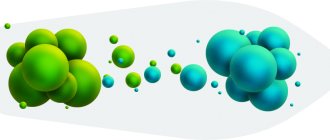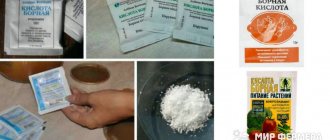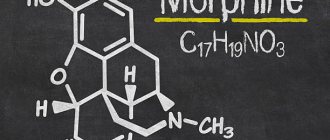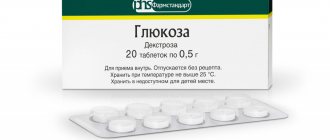Candide
Candide (active substance - clotrimazole) is a broad-spectrum antimycotic drug for external and local use, which has antimicrobial, antiprotozoal, and trichomonacid effects. The antifungal effect of Candida is due to its ability to disrupt the synthesis of one of the main structural components of the fungal cell membrane - ergosterol, which fundamentally affects its permeability and ultimately causes cell lysis. In small concentrations it acts fungistatically (inhibits the growth and development of fungal cells), and in large concentrations it exhibits fungicidal (destroying) activity. In the latter case, the drug interacts with mitochondrial enzymes and peroxidases, which causes an increase in the concentration of hydrogen peroxide above the toxic threshold, which also contributes to the death of fungal cells. Candide exhibits antifungal activity against dermatomycetes Epidermophyton floccosum, Microsporum canis, Trichophyton rubrum, Trichophyton mentagrophytes, yeast-like fungi Candida spp., incl. Candida albicans, Torulopsis glabrata, genus Rhodotorula. Acts on Pityrosporum orbiculare, the causative agent of lichen versicolor. Effective against infectious lesions caused by gram-positive bacteria: Corynebacterium mlnutisslmum (causative agent of erythrasma), Staphylococcus spp., Streptococcus spp. Candide also reduces the “population” of gram-negative microorganisms - Bacteroides, Gardnerella vaginalis. In submaximal concentrations it is effective against Trichomonas vaginalis. Candide is poorly absorbed through the skin and mucous membranes, which, however, is a positive property of the drug, since it deprives it of a systemic component, thereby reducing the risk of side effects. When used externally, the highest concentration of the active substance is observed in the epidermis (higher than in the deeper layers - the dermis and subcutaneous tissue). When administered intravaginally, the degree of absorption of Candida is 4-10% of the dose used.
High levels of the drug in vaginal secretions and low levels in blood plasma persist for 2-3 days. Once in the liver, candide is quickly metabolized to form inactive metabolites.
Candide is available in several dosage forms: cream, solution and powder for external use, vaginal gel and tablets. The cream should be applied to a previously washed and dried area of the infected skin 2-3 times a day. After the symptoms of the disease disappear, therapy is continued for at least another 2-3 weeks: this is done to ensure complete cure of the patient and prevent relapses. The frequency of use of the solution is the same: 2-3 times a day. Before using it, the affected areas of the skin are washed with soap with a neutral pH. The powder can be used more often - 3-4 times a day. A clear improvement in the patient's condition can be expected on days 3-5 of pharmacotherapy. The key to successful treatment is regular use of candida. The duration of the drug course is individual and determined by the severity and nature of the disease, the degree of pathological changes and the effectiveness of the treatment. Treatment for dermatomycosis is carried out for at least 1 month, pityriasis versicolor (varicolored) - 1-3 weeks. For fungal diseases of the skin of the lower extremities, treatment is recommended to continue for another 2 weeks after the elimination of clinical signs of the disease. Candida in the form of a gel is introduced into the vagina using a special applicator in the amount of 5 g every day in the evenings for 6 days. A repeated medication course is possible only after consultation with a doctor. Candida tablets are inserted into the vagina for 1-6 days, 100-500 mg. The drug in any of its forms is not intended for application to the skin in the eye area. If there are signs of hypersensitivity or skin irritation, pharmacotherapy is interrupted. In patients suffering from liver failure, it is recommended to periodically monitor biochemical indicators of the functional state of the liver.
Candid-B: use in dermatological practice
IN
Currently, a large number of different products for external use have appeared on the Russian pharmaceutical market. Two or more component preparations have become quite widely used. The presence of several active substances in one drug significantly affects the indications for its use.
Candide-B
(manufactured in Glenmark, India) is a combination of an antimycotic - clotrimazole and a strong topical steroid - beclomethasone dipropionate.
Clotrimazole (1-[(2-Chlorophenyl)diphenylmethyl]-1H-imidazole) belongs to the group of azole compounds, the most common group of antifungal drugs currently used. All drugs in this group have a wide spectrum of antimycotic activity: they act on dermatophytes, fungi of the genus Candida, and mold. They are also active against bacterial agents and protozoa. The antifungal effect of azole compounds is due to disruption of ergosterol synthesis, changes in the permeability of the fungal membrane and cell lysis. At low concentrations the drug has a fungistatic effect. In minimal fungicidal concentrations, it promotes the release of potassium and intracellular phosphorus compounds from the cell and the breakdown of cellular nucleic acids. Clotrimazole penetrates well into the skin and accumulates mainly in the stratum corneum of the epidermis. However, the concentration of the drug in the deeper layers of the epidermis is higher than the MIC for dermatophytes. When applied to the skin, clotrimazole has virtually no systemic effect. The drug extremely rarely causes side effects (only local ones - erythema, itching, allergic dermatitis).
Beclomethasone dipropionate is a strong topical steroid. Its anti-inflammatory effect is associated, first of all, with the activation of gene transcription in cells and the formation of proteins with anti-inflammatory activity (lipocortin-1, nuclear factor Carr B inhibitor, IL-1 receptor antagonist, neutral endopeptidase). Like any other topical steroid, beclomethasone has a number of side effects: hyperpigmentation, hypopigmentation, skin atorophyia, telangiectasia, inhibition of wound healing, hypertrichosis, allergic contact dermatitis, flora activation, acneiform rashes, systemic action. In this regard, the duration of use of topical steroids is limited: no more than 5-7 days on the facial skin and no more than 10-14 days on other areas of the skin.
The combined drug Candid-B is available in the form of a cream
. This form is used primarily on smooth skin (if the pathological process is not accompanied by pronounced weeping).
An eczematous reaction is one of the standard pathological skin reactions. It can occur in various diseases (mycoses of the feet and smooth skin, streptoderma, scabies, etc.), in the presence of a genetically predetermined propensity for just such a response of the skin to various influences. As a rule, an eczematous reaction is a manifestation of delayed-type hypersensitivity. Therefore, using only an etiotropic drug can lead to increased skin inflammation. It is in such cases that the use of a combination drug is justified, containing, in addition to the agent acting on the causative agent of the disease, a topical steroid that has a pathogenetic anti-inflammatory effect.
Indications
for the use of Candida-B on a cream basis are, first of all, forms of mycosis of the feet, accompanied by a hyperergic reaction to the presence of the fungus: dyshidrotic and, partly, intertriginous.
It is suggested to apply the drug to the affected areas of the skin 2-3 times a day. The duration of use of Candida-B usually does not exceed 5-7 days. Subsequently, a “pure” antimycotic, Candide
(the active principle is clotrimazole). For mycosis of smooth skin, the combined drug is used much less frequently (usually only an antimycotic is used).
Skin lesions caused by Candida fungi usually appear in the folds. The occurrence of the disease is promoted by both endogenous (diabetes mellitus, immunocompromised conditions, etc.) and exogenous (especially frequent contact with water) factors. As a rule, skin lesions are accompanied by itching and pain. With candidiasis of the skin, an eczematous reaction is also often observed. The use of Candida-B in the form of a lotion makes it possible to avoid the use of aniline dyes traditionally used in such cases (uncomfortable for the patient). The drug is applied to the affected areas 2-3 times a day for several days. After the acute inflammatory reaction subsides, they move on to using Candida (in the form of lotion or powder). Most often, this treatment regimen is used for candidal lesions of the anogenital area, which are especially painful for patients. In such cases, it is the use of a combination drug that contains, in addition to the antimycotic, a topical steroid, which makes it possible to quickly achieve significant improvement in the course of the disease.
The use of Candida-B for seborrheic dermatitis is often justified
.
In this disease, the main etiological factor is fungi of the genus Pityrosporum
.
The disease develops in patients with seborrhea in the so-called seborrheic areas (upper chest and back, nose and cheek area, scalp). With this disease, an eczematous reaction of varying degrees of severity is also quite common. Due to the presence of such a hyperergic reaction to fungi of the genus Pityrosporum
, quite often it is necessary to again use a combination drug containing, in addition to the antimycotic, a topical steroid. Due to the fact that the skin of the face is most sensitive to the action of topical steroids, and side effects when using these drugs in this localization develop most often and quickly, they cannot be used for a long time. However, applying Candide-B cream to the facial skin for 2-5 days appears to be practically safe (provided that there is a further complete refusal to use topical steroids for at least 3 weeks), allowing one to quickly achieve a cosmetic effect. When the skin of the scalp is affected, the most comfortable solution for the patient is Candide-B in the form of a lotion (the drug does not stain the hair when it comes directly onto the skin). The use of Candida-B for seborrheic dermatitis allows you to quickly achieve a clinical effect, but requires long-term further complex treatment of the disease.
Thus, the drug Candid-B occupies a special niche in the practice of a dermatologist
. Its use is justified in almost all cases when a hyperergic reaction to the presence of a fungus develops. The broad-spectrum antimycotic and strong topical steroid included in the drug determine both its etiotropic and pathogenetic effects. Prescribing Candida-B allows you to quickly achieve a clinical effect, and often restore the patient’s ability to work. However, it is necessary to remember the side effects that may develop during the use of topical steroids. In this regard, when prescribing this drug, one should remember the basic principles of topical steroid therapy. First of all, that the prescription of the drug is justified only for a short time. Therefore, after achieving a clinical result (this usually takes several days), you should switch to the use of drugs that do not contain topical steroids.





